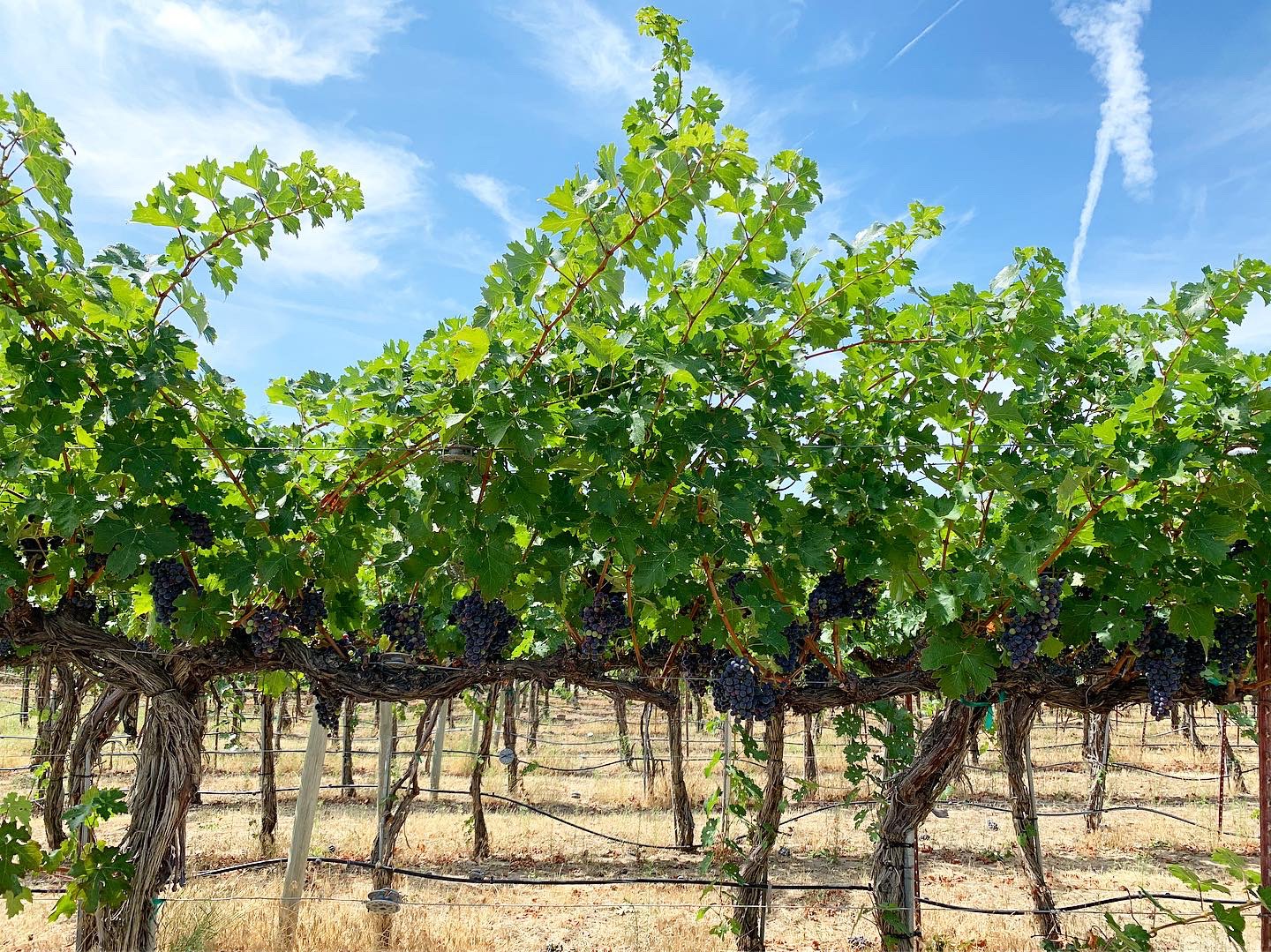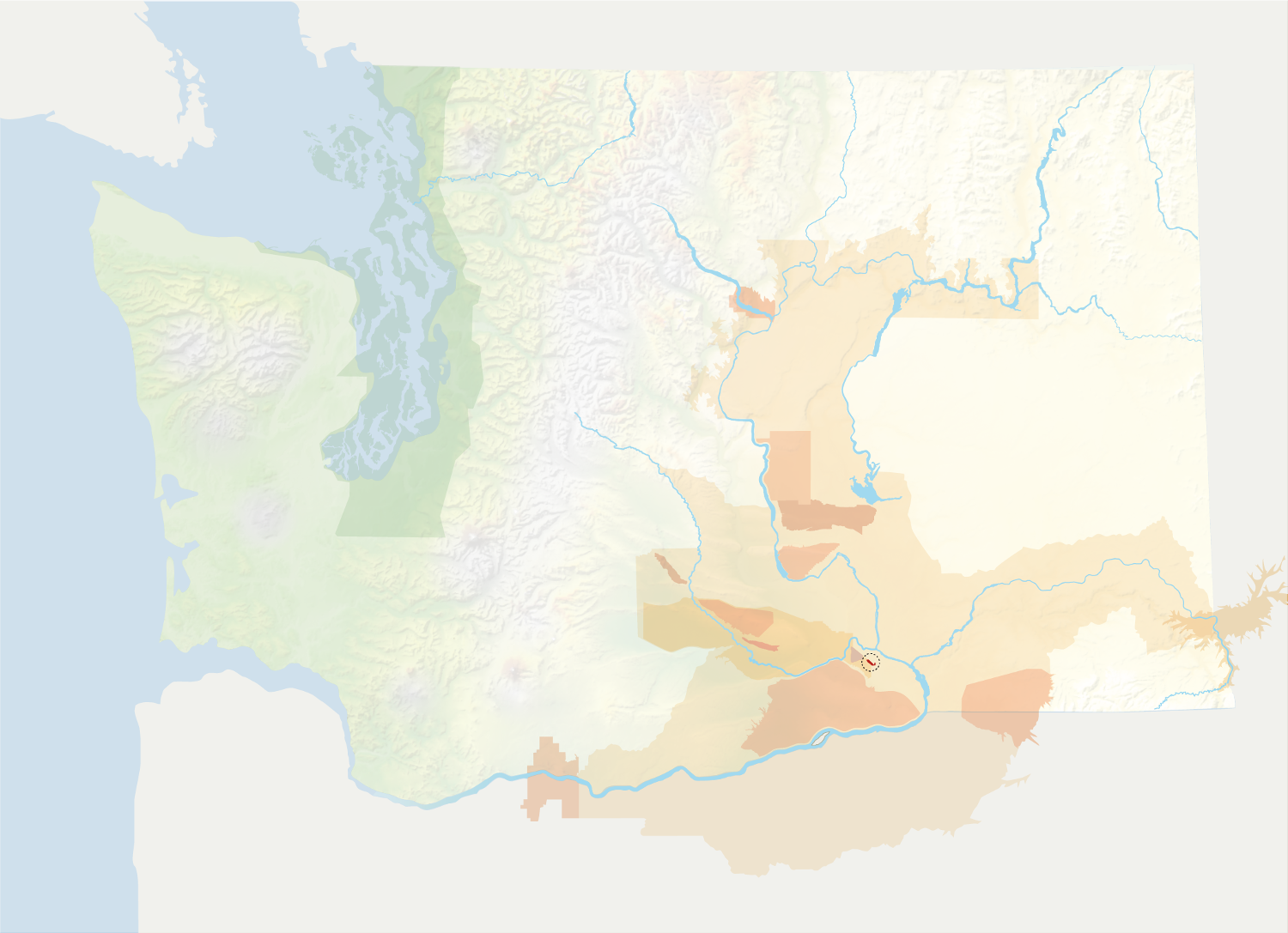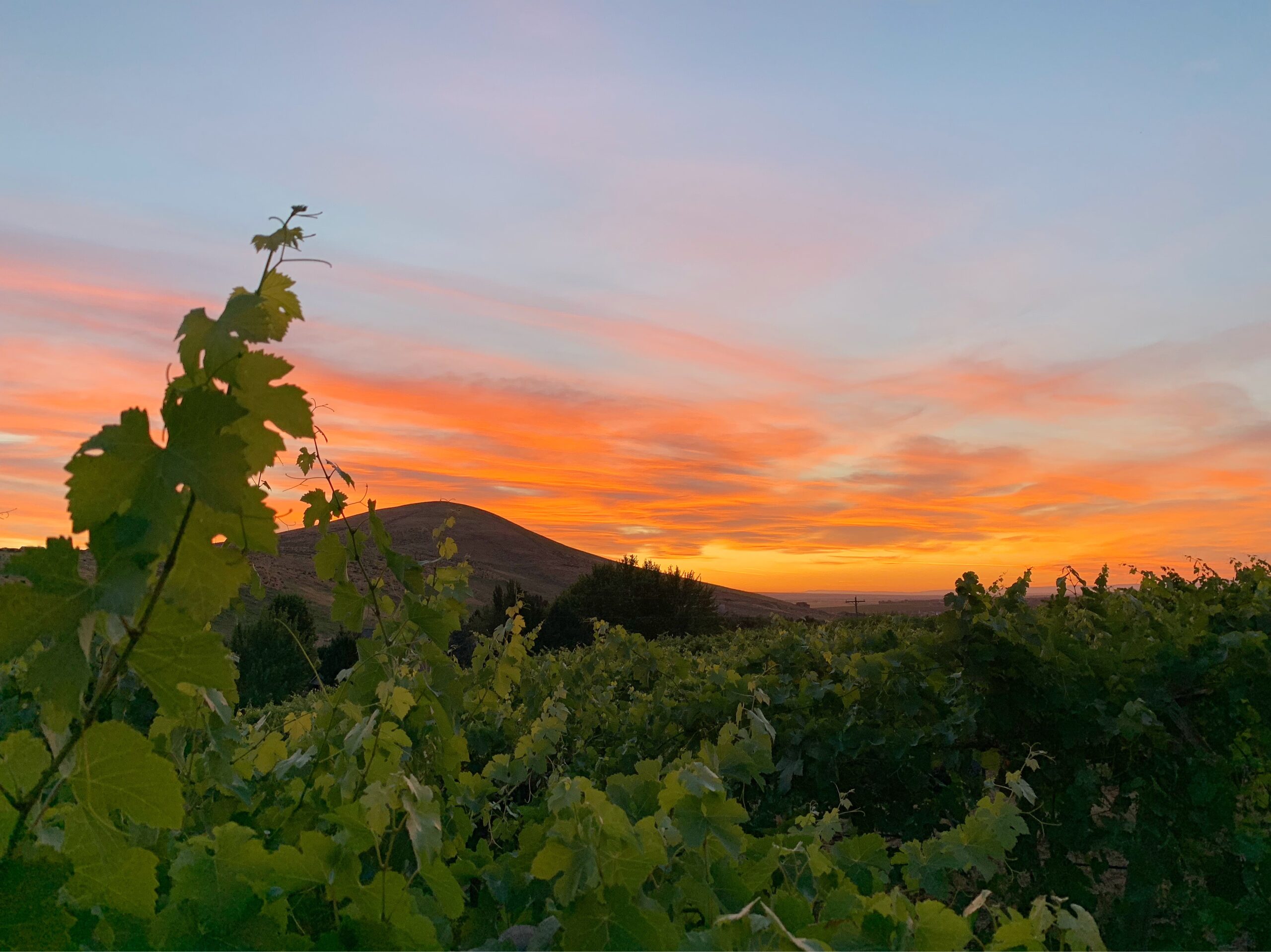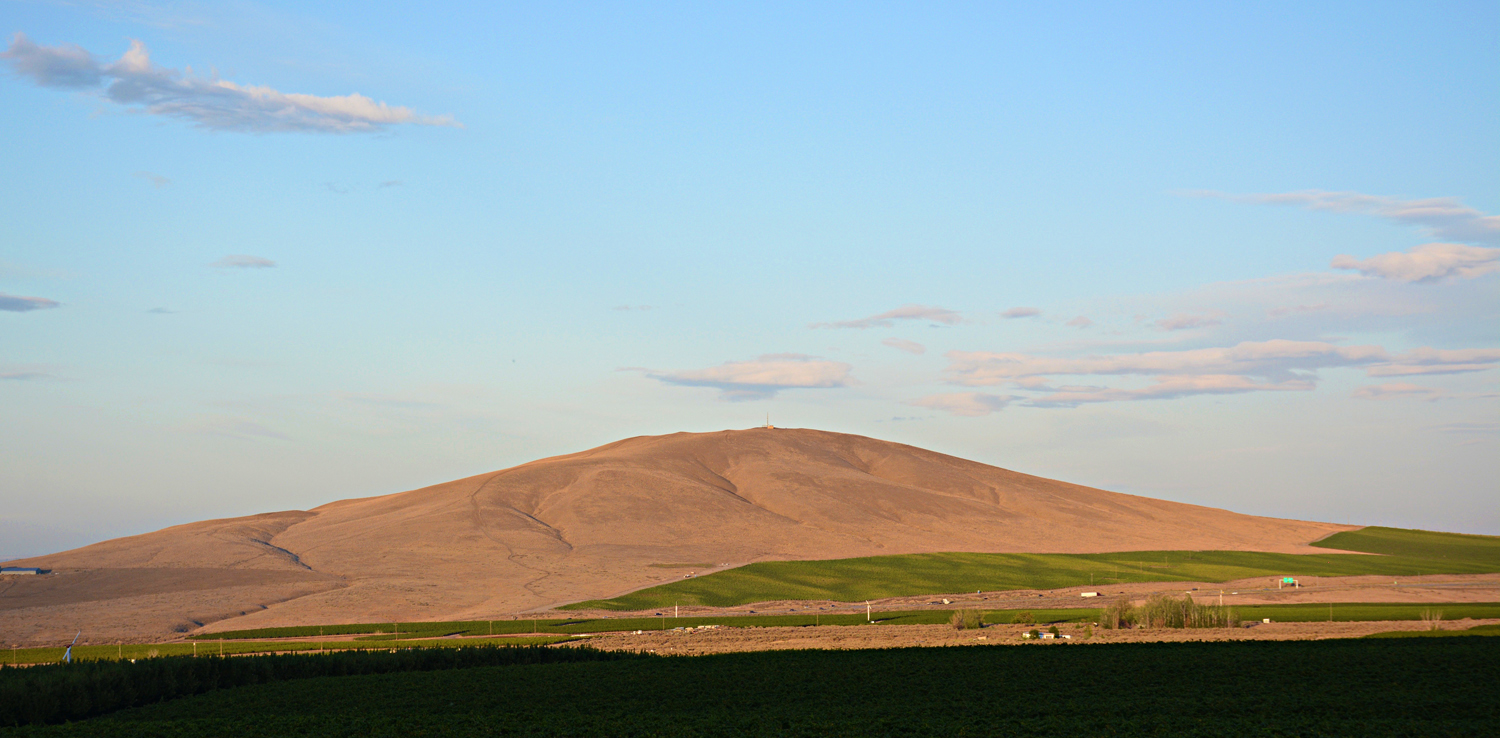Location: South-central Washington
Designated: 2020
Total Size: 815 acres
Acres Under Vine: 110 acres (44 hectares)
Top Varieties: Cabernet Sauvignon
Soils: Loess, windblown silt and sand, ice age flood sediment
Average Annual Precipitation: 5 inches
Two Things to Know:
- Candy Mountain is currently the smallest appellation in Washington.
- Its proximity to Red Mountain give it similarities to that esteemed appellation.
Located in south-central Washington, Candy Mountain is wholly contained within the Yakima Valley appellation, which itself is part of the larger Columbia Valley.
Candy Mountain lies four miles southeast of Red Mountain and generally has a similar, warm climate to that appellation. Like Red Mountain, it also has higher winds relative to the surrounding area. At 815 total acres, Candy Mountain is Washington’s smallest viticultural region. It’s also one of our youngest.

Established in 2020, Candy Mountain’s vineyards are located on the southwestern side of the mountain, which has a slope of 2 to 20 degrees. Elevations in the appellation range from 640 to 1,360 feet above sea level, with the upper reaches above the Missoula Floods, a cataclysmic series of floods that define Columbia Valley soils. Candy Mountain is also part of the Yakima Fold Belt, which are uplifts in the land that comprises many of eastern Washington’s viticultural areas.

The soils of Candy Mountain are composed of loess – windblown silt and sand – on top of ice age flood sediment. Soils are generally thin with decreased water holding capacity, allowing growers to stress vines as they see fit during the growing season. This also lets roots come into contact more easily with the basalt bedrock, which has a different suite of minerals than the topsoil.
There is currently one winery located within the appellation.


